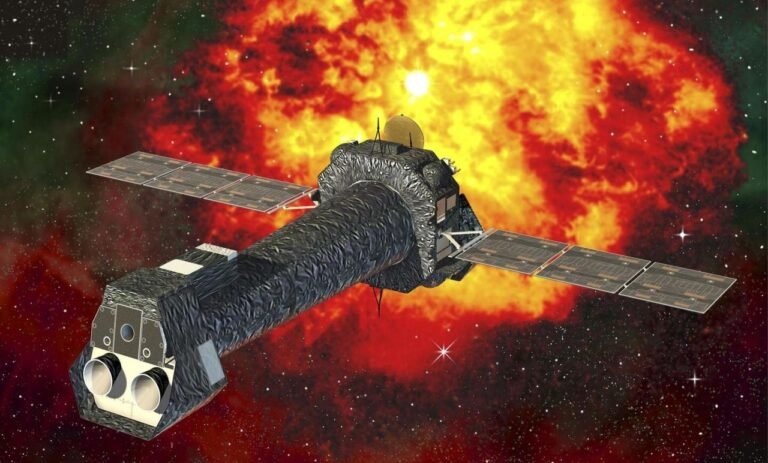
A powerful blast spotted from a dwarf star was strong enough to strip away the atmosphere of any Earth-like planets that might have been lurking close by, new research suggests.
The study, published Wednesday (Nov. 12) in the journal Nature, was the first to confirm a coronal mass ejection (CME) — a massive, high-speed blast of plasma — from a star besides the sun. As scientists search for habitable worlds, understanding how strongly and frequently stars erupt will be essential to figuring out where to center our search, the study’s authors argue.
The star, called StKM 1-1262, is an M dwarf. Statistically, M dwarfs are smaller than the sun and far more active, meaning they send off more solar flares and CMEs. M dwarfs are nevertheless popular targets for life searches, because they are common in our universe. It’s also easier to spot planets around these stars; because M dwarf are so small, planets tend to form much closer to them (and are therefore easier to detect) than those around larger sun-like stars.
But there’s a caveat: Because M dwarfs are more active, and the “Goldilocks zone” where water could exist on a theoretical rocky planet’s surface is closer to the dimmer star than Earth is to the sun, any Earth 2.0 would likely be more exposed to more CMEs than we experience with the sun.
“One of the problems could be [that] these CMEs happen so regularly, and they’re hitting the planets so regularly, that they strip the atmosphere,” lead study author Joe Callingham, a radio astronomer at the Netherlands Institute for Radio Astronomy, told Live Science in an interview. “So, great — you’re in the Goldilocks zone, but you’ve got no help here, because the stellar activity destroyed [the chances for life].”
An atmosphere-shredding storm
The researchers spotted the initial burst in radio waves with the Low Frequency Array (LOFAR) radio telescope — a European network of antennas located primarily in the Netherlands — and assisted by new data processing methods from co-authors at the Paris Observatory. LOFAR is the most sensitive radio telescope ever built, Callingham noted, adding that the algorithms allowed the researchers to “get lucky” in finding the small burst of light in the sky.
Follow-up observations with the European Space Agency’s XMM-Newton space telescope showed the star’s temperature, confirming that it is an M dwarf, along with its rotation (20 times faster than the sun) and its brightness in X-rays.
The rotation and brightness revealed the motion of the CME, which was moving at nearly 1,500 miles per second (2,400 kilometers per second) — a speed seen in only 5% of similar bursts happening on the sun. The combined telescope observations also showed that the CME is moving fast enough, and with enough density, to blow away atmospheres of any planets in a close orbit with the star.
While LOFAR is powerful, Callingham said the challenge is that this observation (paired with the new data processing techniques) is approaching the telescope’s resolution limit. To see more extrasolar CMEs, the research team is looking forward to science operations of the Square Kilometer Array, an enormous radio telescope project being built in Australia and South Africa, in the 2030s.
Callingham said the Square Kilometer Array should be able to spot “tens to hundreds” of extrasolar CMEs within the first year, which would allow the team to better chart how often an atmospheric-stripping blow would occur and how CMEs vary by types of star.
“It’s so impactful,” he said of the search, “because we really are, as astronomers, trying to find a habitable planet. … It’s one of the key goals of astronomy over the next, I would hope, decade. But maybe it’s going to take longer, or maybe the rest of my life, to find Earth 2.0.”


